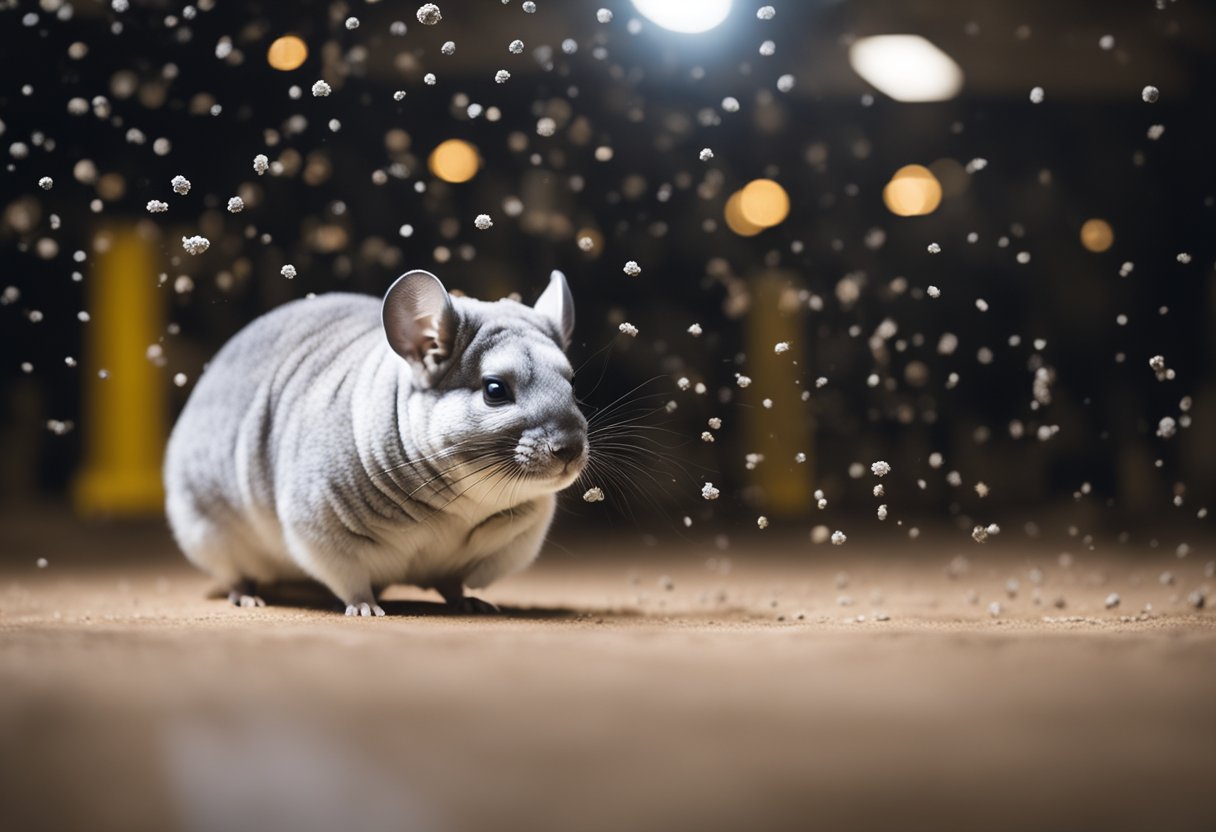Is Chinchilla Dust Harmful to Humans? Understanding the Risks and Safety Measures
Chinchilla dust is vital for these small pets during their bath time, but many wonder if it poses health risks to humans. While quality chinchilla dust is generally safe, poor-quality dust can contain harmful substances that may cause respiratory issues. Understanding these risks is important for anyone handling chinchillas or spending time in the same environment.

As you learn about chinchilla dust, you’ll discover how it can affect your health, especially if you have allergies or respiratory problems. By taking the right precautions, you can minimize any negative effects while still allowing your chinchilla to enjoy its dust baths.
Being informed will help you create a safe and enjoyable space for both you and your pet. Together, you can find ways to enjoy chinchilla ownership while keeping health risks in check.
Key Takeaways
- Chinchilla dust quality matters for your health.
- Proper handling can reduce potential risks.
- Awareness of safety measures is key for pet owners.
Health Implications of Chinchilla Dust

Chinchilla dust can affect your health in various ways. Understanding these effects can help you manage risks related to respiratory concerns and allergic reactions.
Respiratory Concerns
When chinchilla dust is stirred up, its fine particles can become airborne. This poses a risk to your respiratory health. If you have pre-existing conditions, such as asthma or chronic bronchitis, you could experience worsening symptoms.
Low-quality chinchilla dust may contain harmful substances like silica or glass powder. Breathing in these particles can lead to serious issues over time, including lung damage. It is crucial to choose high-quality dust to minimize these hazards. Ensure good ventilation in the area where your chinchilla bathes to reduce dust concentration in the air.
Allergic Reactions
Some individuals may develop allergic reactions to chinchilla dust. Symptoms can include sneezing, coughing, or skin irritation. These reactions can occur immediately or manifest over time with repeated exposure.
If you notice worsened symptoms while using chinchilla dust, you should consider preventive measures. Using a mask while handling dust or bathing your chinchilla can be helpful. Additionally, look for dust labeled as hypoallergenic or specifically designed for sensitive individuals. Taking these steps can help you enjoy chinchilla ownership while minimizing health risks.
Handling and Safety Measures

When handling chinchilla dust, taking the right safety measures is crucial. This section covers proper ventilation, personal protective equipment, and helpful resources to ensure you manage dust safely and effectively.
Proper Ventilation
Good airflow is essential when using chinchilla dust. This helps to disperse fine particles in the air, minimizing your risk of inhalation.
- Open Windows: Keep windows open to allow fresh air to circulate.
- Use Fans: Position fans near the dust bathing area to direct dust outside.
- Create a Dust-Free Zone: Choose a well-ventilated space away from your living areas for dust baths.
You should limit the time chinchillas spend in confined spaces while dusting. Less time in these areas reduces the dust accumulation in the air, making it safer for both you and your pet.
Personal Protective Equipment
Using personal protective equipment (PPE) can help reduce dust exposure. This is especially important if you are sensitive to allergens.
- Masks: Wear a dust mask to prevent inhaling fine particles. Look for masks that are rated for small particles.
- Gloves: Use gloves when handling chinchilla dust to avoid skin irritation or allergic reactions.
- Eyewear: Safety glasses protect your eyes from dust particles.
By following these guidelines, you can create a safer environment when handling chinchilla dust. It’s wise to adopt these practices especially during the dust bathing process.
Resources
There are many resources available to help you understand how to safely manage chinchilla dust.
- Online Articles: Look for reliable articles that detail safety precautions and benefits of chinchilla dust care.
- Veterinarian Guidance: Consulting your veterinarian can provide tailored advice for your specific situation.
- Pet Care Communities: Joining forums or groups can offer shared experiences and tips from other chinchilla owners.
Utilizing available resources can lead to better handling practices. The more informed you are, the safer your experiences with chinchilla dust will be.
Frequently Asked Questions

Chinchilla dust raises many questions regarding its safety for humans. It is essential to understand the potential risks and what you can do to stay safe.
Can chinchilla dust cause respiratory issues in humans?
Yes, chinchilla dust can irritate your respiratory system. This is especially true for individuals with asthma or allergies. When chinchillas kick up dust during baths, tiny particles can become airborne and may affect sensitive airways.
What are the main ingredients in chinchilla dust bath products?
Chinchilla dust is commonly made from pumice, a volcanic mineral. High-quality dust products do not contain harmful substances. However, some lower-quality dust might include ingredients like silica or glass powder, which can pose health risks.
Are there any allergic reactions associated with chinchilla dust exposure?
Some people may experience allergic reactions to chinchilla dust. Symptoms can include sneezing, coughing, or skin irritation. If you have a history of respiratory issues or allergies, it’s important to take precautions when handling chinchilla dust.
How does chinchilla dust compare to diatomaceous earth in terms of human safety?
Chinchilla dust is generally safer than diatomaceous earth for humans. While diatomaceous earth can cause respiratory issues and skin irritation when inhaled, high-quality chinchilla dust usually lacks harmful additives. Choosing the right product is key for safety.
What protective measures should be taken when using chinchilla dust around people?
To minimize risks, consider using chinchilla dust in a well-ventilated area. Wearing a mask can help reduce inhalation of dust particles. Keeping a safe distance during your chinchilla’s bath time can also protect you from dust exposure.
Can humans contract any illnesses from chinchillas through dust baths?
Generally, the risk of contracting illnesses from chinchillas via dust baths is low. Chinchilla dust itself does not carry diseases. However, it is always good practice to maintain cleanliness and wash your hands after handling chinchillas or their dust bath products.

